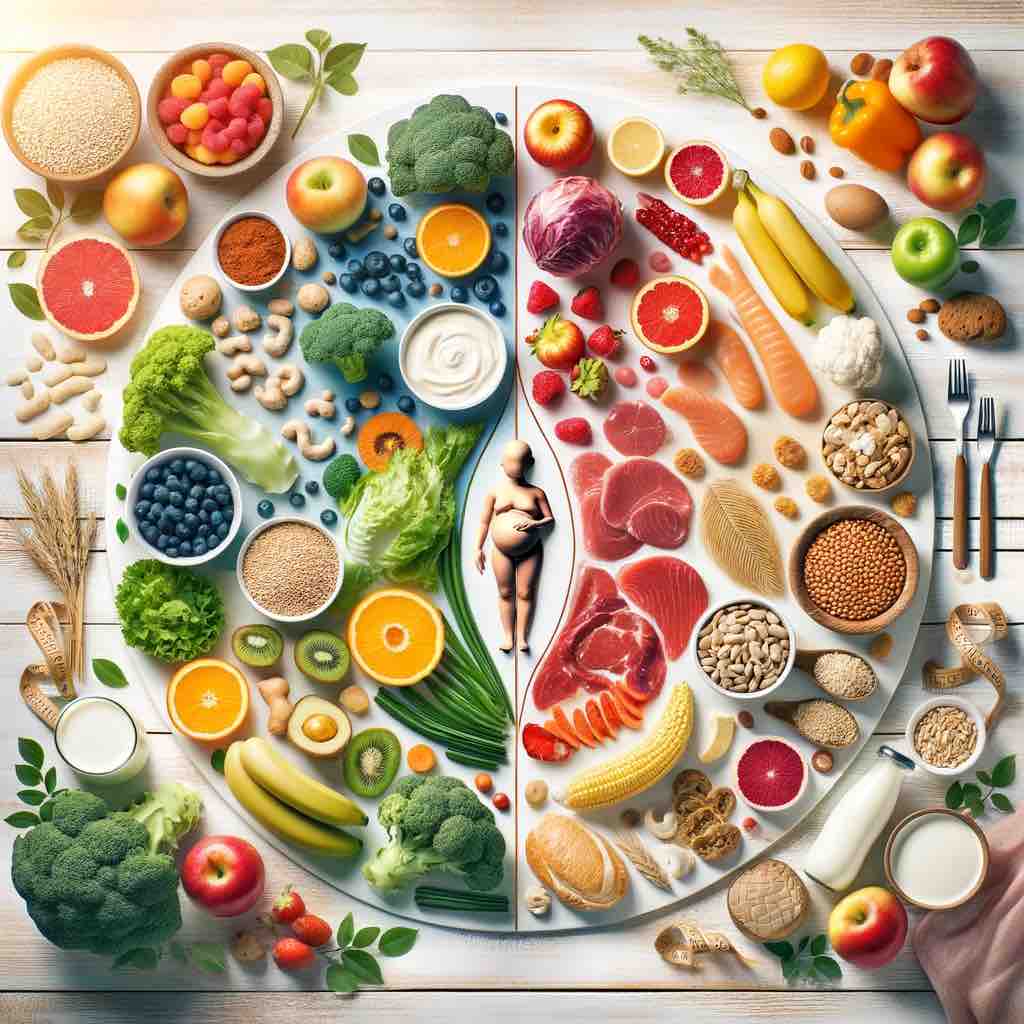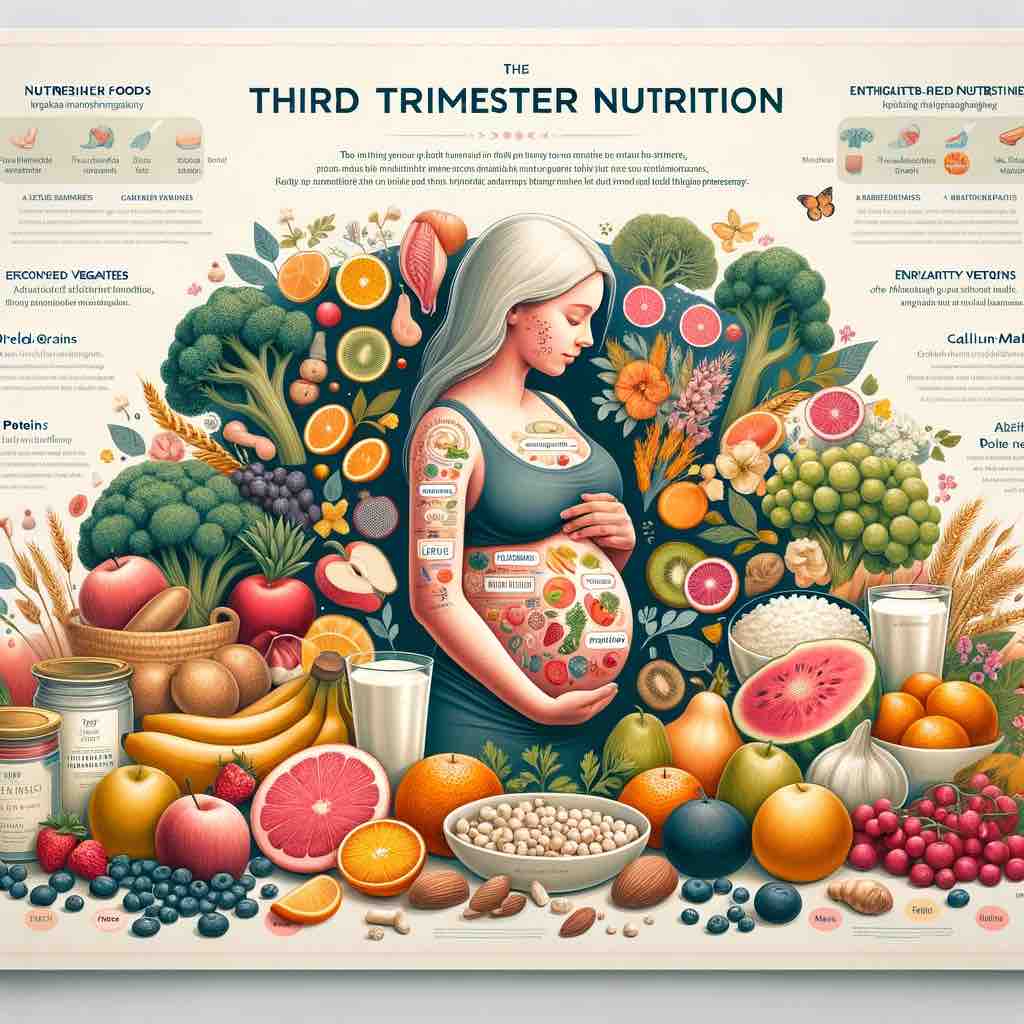
Introduction:
Pregnancy is a journey of transformation and discovery, a time when the body’s needs and cravings take a front seat, steering dietary choices towards health, safety, and nourishment. Among the myriad of nutritional advice and dietary do’s and don’ts, one simple yet significant aspect often overlooked is the choice of salad dressing. Enter the world of apple cider vinegar (ACV) – a culinary staple revered not just for its tangy zest but for its myriad of health benefits. But, when you’re eating for two, is apple cider vinegar just as wonderful? And how can you incorporate it safely and deliciously into your diet?
ACV has long been celebrated in the wellness world for its potential health benefits. From aiding digestion to possibly helping with blood sugar regulation, it’s a versatile ingredient that adds not just flavor but a punch of goodness to your meals. But, for expectant mothers, the narrative takes a slightly different turn – it’s not just about the benefits but also about ensuring safety and moderation.
As we embark on this flavorful exploration, we’ll dive into the heart of what makes ACV a great choice for pregnant women, how to use it safely, and most importantly, we’ll unveil an exclusive recipe for a homemade apple cider vinegar salad dressing that’s not just safe but an absolute delight for your taste buds. So, whether you’re a salad enthusiast or just looking to add a healthy twist to your pregnancy diet, this guide is tailored to add that extra zing to your meals while keeping you and your little one’s well-being in mind. Let’s whisk together health, safety, and flavor in a bottle of homemade dressing, shall we?
The Essence and Safety of Apple Cider Vinegar During Pregnancy
Understanding Apple Cider Vinegar
Apple cider vinegar, a household name in the world of natural health remedies, is made from fermented apple juice. Its key ingredient, acetic acid, imparts a distinctive sour taste and aroma. Beyond its culinary use as a salad dressing and a flavor enhancer, ACV is often touted for its health benefits, including aiding digestion, managing blood sugar levels, and even contributing to weight management strategies.
Pregnancy and Apple Cider Vinegar: A Safe Combination?
When it comes to pregnancy, every ingredient in your diet is scrutinized for its safety and benefit. The primary concern with ACV during pregnancy revolves around its acidity and potential bacterial content, especially in unpasteurized forms. Pasteurized apple cider vinegar, however, undergoes a process that eliminates harmful bacteria, making it a safer choice for expectant mothers. Despite the safety profile of pasteurized ACV, moderation remains key. Its high acidity can sometimes cause or exacerbate digestive discomfort, a common issue during pregnancy.
Balancing the Acidity
One of the fundamental ways to enjoy ACV safely during pregnancy is by balancing its acidity. This is particularly important for women who experience heightened sensitivity to acidic foods or have a history of gastric issues. Diluting ACV with water or incorporating it into recipes can mitigate its acidic nature, making it more palatable and stomach-friendly.
Nutritional Profile of Apple Cider Vinegar
ACV is not just about tang and flavor; it brings along a modest nutritional footprint. It contains small amounts of potassium, amino acids, and antioxidants. These components contribute to its health-promoting properties. While ACV isn’t a significant source of vitamins or minerals, its value lies in its potential to enhance the nutritional quality of foods it’s paired with, such as salads rich in vegetables and greens.
Crafting the Perfect Pregnancy-Safe Apple Cider Vinegar Dressing
Recipe Philosophy: Simple, Safe, Savory
The beauty of homemade salad dressings lies in their simplicity and the ability to control ingredients. For a pregnancy-safe ACV dressing, the focus is on using pasteurized vinegar and complementing it with ingredients that are both nutritious and gentle on the stomach.
Ingredients: Choosing Quality and Flavor
- Base: Pasteurized apple cider vinegar serves as the foundation. Its robust flavor profile sets the stage for a delightful dressing.
- Oil: A good quality oil like extra virgin olive oil not only balances the acidity of vinegar but also adds a smooth texture and healthy fats to the dressing.
- Sweetness: To counter the sharpness of ACV, a natural sweetener like honey or maple syrup can be added. This not only enhances the flavor but also contributes a touch of natural sweetness without overpowering the dressing.
- Herbs and Spices: Fresh herbs like basil or parsley add a burst of freshness and color, while spices like garlic powder, mustard, and a hint of salt and pepper round off the flavor profile, making the dressing a delightful concoction of flavors.
Method: Simplicity in Preparation
The method of preparing this dressing is as straightforward as its ingredients. It involves whisking together the vinegar and oil in a preferred ratio, then gently blending in the sweetener and spices. For an even consistency and thorough mixing, using a blender can be effective, especially when emulsifying the oil and vinegar.
Personalization: Adjusting to Taste
The joy of homemade dressings is in their versatility. You can adjust the quantities of ingredients to suit your taste preferences. If you prefer a milder dressing, increase the oil ratio. For more sweetness or herbaceousness, adjust the sweetener and herbs accordingly. The recipe is forgiving and encourages experimentation.
Creating your apple cider vinegar salad dressing during pregnancy is not just about eating safely; it’s about indulging in flavors that delight your palate while nourishing your body. This simple, adaptable recipe offers a way to enjoy the benefits of ACV while ensuring that you and your baby are consuming something that is both safe and delicious. Each ingredient has been chosen for its safety profile, nutritional value, and ability to create a harmonious blend of flavors that elevate your meals from ordinary to extraordinary.
Enhancing Your Salad with the Perfect Dressing
The Art of Salad Making During Pregnancy
Salads, often a staple in a health-conscious diet, especially during pregnancy, are more than just a mix of greens and vegetables. They are a canvas for culinary creativity, a way to combine a myriad of textures, flavors, and nutrients in one bowl. The dressing, in this context, is not just a flavor enhancer; it’s a vital component that binds these elements together, adding depth and richness to the salad.
Pairing Dressings with Salads
- Green and Leafy Salads: For salads dominated by greens like spinach, kale, or arugula, the apple cider vinegar dressing adds a bright, tangy contrast that highlights the freshness of the leaves.
- Grain-Based Salads: If you’re incorporating grains like quinoa, farro, or bulgur, the dressing can provide a necessary acidic balance, cutting through the earthiness of the grains.
- Fruit and Nut Salads: For salads that feature fruits and nuts, the dressing’s sweetness and acidity can enhance the natural flavors of the fruits while complementing the crunch of the nuts.
Customizing Your Salad Dressing
- Adjusting Consistency: Depending on the salad, you may prefer a thinner or thicker dressing. Adjust the oil and vinegar ratio for a lighter or richer texture.
- Experimenting with Herbs and Spices: Herbs like dill, cilantro, or mint can offer a refreshing twist. Spices like crushed red pepper or cumin can introduce a new flavor dimension.
- Adding Creaminess: For a creamy variant, consider blending in a small amount of Greek yogurt or avocado, ensuring they align with your dietary preferences during pregnancy.
Nutritional Considerations for Pregnant Women
When crafting salads and dressings during pregnancy, the focus is not just on flavor but also on nutritional value.
- Folate-Rich Greens: Opt for greens like spinach or kale, known for their high folate content, crucial during pregnancy.
- Protein Addition: Add a source of protein such as grilled chicken, boiled eggs, or beans to make the salad more filling and nutritionally balanced.
- Healthy Fats: The inclusion of olive oil in the dressing, along with ingredients like avocados or nuts in the salad, ensures a healthy dose of essential fats that are beneficial for both the mother and the developing baby.
Serving and Storage Tips
- Dressing the Salad: It’s best to dress the salad just before serving to maintain the freshness and crispness of the ingredients.
- Storing the Dressing: If there’s leftover dressing, store it in an airtight container in the refrigerator. Homemade dressings, without preservatives, generally keep well for up to a week.
Engaging the Senses
Remember, eating during pregnancy is as much about nourishment as it is about enjoyment. Each bite of your salad, coated in the homemade apple cider vinegar dressing, should be a delightful experience that engages the senses. The aroma of the fresh herbs, the tanginess of the vinegar, the richness of the oil, and the subtle sweetness all come together to create a symphony of flavors that make eating healthy an enjoyable endeavor.
In conclusion, this journey into creating a pregnancy-safe apple cider vinegar salad dressing goes beyond just mixing ingredients. It’s about understanding and respecting the needs of your body during this special time, about bringing together flavors and textures in a way that delights and satisfies, and about making every meal an opportunity to nourish both you and your baby with love, care, and flavor. As you drizzle this dressing over your next salad, take a moment to appreciate the simple joys of eating well, for it’s these little things that make the journey of motherhood even more beautiful.
Embracing a Healthy Pregnancy Lifestyle Through Salad Dressings
The Role of Diet in Pregnancy Wellness
Pregnancy is a transformative period where diet plays a pivotal role in the health of both the mother and the developing baby. It’s a time to focus on nutrient-rich foods that provide the essential vitamins and minerals needed for fetal growth and maternal well-being. In this context, salads dressed in homemade apple cider vinegar dressing emerge not just as a dietary choice, but as a commitment to a healthier lifestyle.
Beyond the Bowl: The Impact of What You Eat
- Mental and Emotional Well-being: Eating well-balanced, flavorful meals like a well-dressed salad can uplift your mood and contribute to overall emotional well-being. The act of preparing and enjoying a nutritious meal can be incredibly satisfying and empowering during pregnancy.
- Physical Health Benefits: The combination of leafy greens, fresh vegetables, wholesome grains, and a dressing rich in healthy fats and probiotics can have a positive impact on physical health. This includes better digestion, improved energy levels, and essential nutritional intake.
Salad Dressings: A Gateway to Diverse Nutrients
- Micro-nutrient Diversity: The versatility of salad dressings allows for the incorporation of various ingredients like citrus juices, different types of vinegar, herbs, and spices, each bringing its unique set of nutrients.
- Flavor and Appetite: Pregnancy can sometimes bring changes in appetite and taste preferences. A delicious salad dressing can make nutritious foods more appealing, ensuring that you’re more likely to consume the nutrients needed.
The Joy of Cooking: An Emotional Journey
- Connecting with Your Pregnancy: Cooking during pregnancy can be a way to connect with the journey you are on. Preparing a meal becomes more than just a routine; it’s a nurturing act of love for the child you are waiting to meet.
- Sharing with Family: This period is also about sharing experiences with your partner or family. Cooking and enjoying meals together can be a bonding experience, fostering a supportive environment.
Mindful Eating: Listening to Your Body
- Understanding Cravings and Needs: Pregnancy is a time to tune into your body’s signals. Cravings might indicate a need for certain nutrients. By preparing your meals, like a salad with a homemade dressing, you can address these cravings healthily.
- Balance and Moderation: Mindful eating also involves understanding and practicing moderation and balance. While it’s important to indulge occasionally, maintaining a balanced diet is key for the health of both mother and baby.
Closing Thoughts: Nourishing the Future
As you embark on this journey of pregnancy, remember that every food choice you make has the potential to affect your health and that of your baby. A simple act like preparing an apple cider vinegar salad dressing becomes symbolic – it’s about taking charge of your health, indulging in the joys of eating well, and nurturing the new life within. Let each salad dressed in your homemade concoction be a reminder of the love, care, and thoughtfulness you’re pouring into your pregnancy journey.
In the end, it’s not just about eating; it’s about celebrating life, embracing health, and preparing for the joyous journey of motherhood. So, as you whisk together the ingredients of your dressing, envision the positive impact this small act has in the grand narrative of your pregnancy, a story of health, happiness, and the anticipation of new beginnings.
10 FAQs for Apple Cider Vinegar Salad Dressings During Pregnancy
- Is apple cider vinegar safe to consume during pregnancy?
- Yes, apple cider vinegar is safe during pregnancy if it’s pasteurized. It’s important to use it in moderation and dilute it to reduce its acidity.
- Can apple cider vinegar dressings help with pregnancy symptoms?
- Anecdotally, apple cider vinegar may help alleviate symptoms like morning sickness and heartburn, but it’s best to consult your healthcare provider for personalized advice.
- How do I make a pregnancy-safe apple cider vinegar dressing?
- Combine pasteurized apple cider vinegar with a healthy oil like olive oil, add a natural sweetener like honey, and season with fresh herbs and spices.
- What salads go well with apple cider vinegar dressing during pregnancy?
- Leafy green salads, grain-based salads, and even fruit and nut salads pair wonderfully with apple cider vinegar dressing.
- Can I use any type of apple cider vinegar for my dressing?
- It’s recommended to use pasteurized apple cider vinegar to ensure it’s free from harmful bacteria.
- How long can homemade apple cider vinegar dressing be stored?
- Store it in an airtight container in the refrigerator for up to a week.
- What are the benefits of making my own salad dressing during pregnancy?
- Homemade dressings allow you to control the ingredients, ensuring they are safe and healthy for pregnancy.
- Can I add creamy elements to my apple cider vinegar dressing?
- Yes, you can blend in Greek yogurt or avocado for a creamy texture, but make sure these additions align with your dietary needs during pregnancy.
- Are there any ingredients I should avoid in salad dressings while pregnant?
- Avoid unpasteurized ingredients and excessive use of strong herbs and spices that might not be recommended during pregnancy.
- Can I make the dressing less acidic?
- Yes, you can adjust the oil-to-vinegar ratio or add a bit more sweetener to balance the acidity to your liking.
Blog Tags for the Post
pregnancy nutrition, healthy eating, homemade dressings, apple cider vinegar, pregnancy-safe recipes, salad ideas, cooking during pregnancy, nutritious meals, DIY dressings, wholesome ingredients













